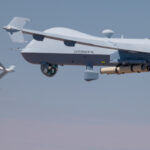
Led by its aerospace business, General Dynamics [GD] on Wednesday reported strong fourth quarter earnings on solid sales and expects continued growth in 2020 and the company signaled an improved outlook in cash collections that will improve financial flexibility. Net income in the quarter increased 12 percent to $1 billion, $3.51 earnings per share (EPS), from $909 million ($3.07 EPS) a year ago, topping consensus estimates by seven cents a share. Sales increased 4 percent to $10.8 billion from $10.4…

 By
By 











